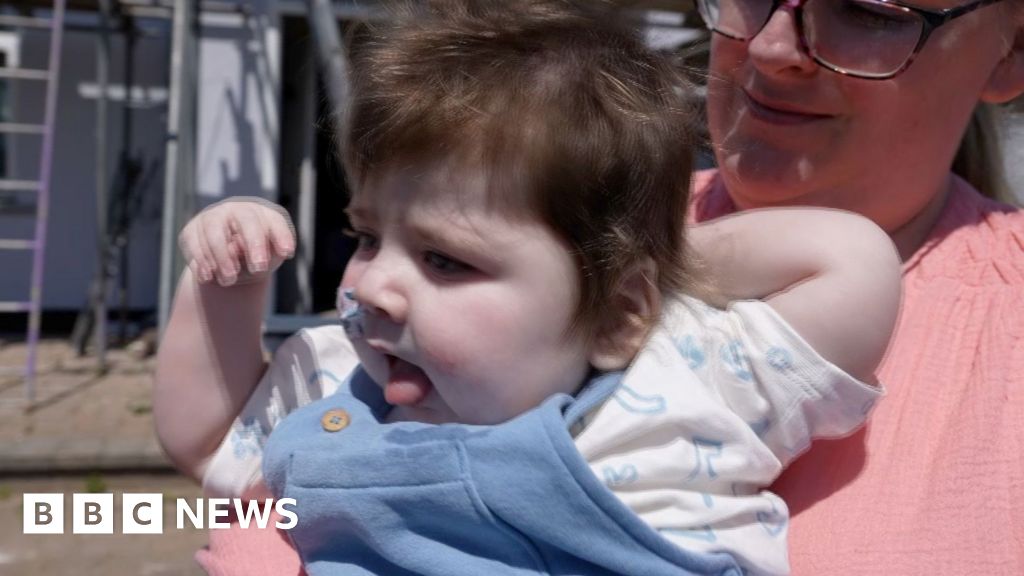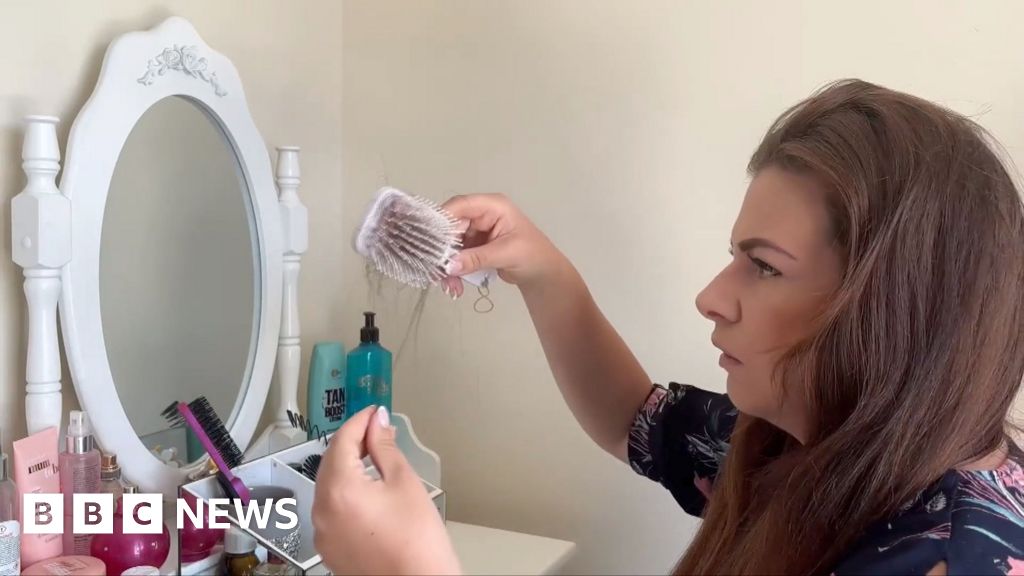ARTICLE AD BOX
Julie Lloyd is taking part in the first UK trial of the new AI-powered trousers.
A stroke survivor is learning to walk independently again thanks to high-tech trousers powered by AI.
Julie Lloyd, 65, is part of the UK's first trial of the "smart garment" that she described as a breakthrough for fellow stroke patients.
The "NeuroSkin" trousers stimulate her paralysed leg using electrodes controlled by artificial intelligence.
The Stroke Association said new technologies are giving hope to the UK's 1.3 million stroke survivors.
The developers of NeuroSkin said the invention is already revolutionising stroke care in France, but Ms Lloyd is one of the first involved in the UK's own trial.
"My leg is almost feeling as if it's being guided," she said.
Ms Lloyd took part in the UK trial at her physiotherapy clinic in Newport.
After first experiencing an uncomfortable "tingling feeling", she said that within a few minutes she was walking unaided for the first time in six months - leaving her feeling "elated".
"[My leg] was suddenly propelled up from the floor and made me feel safe walking, and that's the part that I've honestly not felt at all with all the physio I've had," she said.
Julie needs a cane to walk her dogs near her home in Penarth
The businesswoman, from Penarth in the Vale of Glamorgan, had a minor stroke in January which resulted in her left arm and left leg being partially paralysed. She currently relies on a cane to walk.
"Life before was very energetic, very active," she said, explaining how she ran the Cardiff half marathon before her stroke. "It has taken away a lifestyle I had and that's been terribly tragic."
Her rehabilitation involves hours of repetitive exercises aimed at "teaching" her brain to work around the area damaged by the stroke and make new connections to control her left side.
The progress has been slow and gruelling. But when she got to about 3,000 steps a day with a cane, her physiotherapist recommended she enter the trial of the AI-powered tech.
One side of the "smart garment" monitors the electrical impulses of Ms Lloyd's healthy leg, then recreates those impulses on her weakened leg
Electrical muscle stimulation (EMS) has been used in stroke care for decades, "zapping" weak and atrophied muscles back to life.
But it is a blunt approach, said Rudi Gombauld, the CEO of Lyon-based firm Kurage which is developing wearable devices that deliver EMS pulses controlled by artificial intelligence.
NeuroSkin includes wired trousers and shoes with electrodes above the six main muscle groups in each leg.
Julie Lloyd walking unaided for the first time in the six months since her stroke
"The smart garment is like a second skin which means that you have sensors that can feel how the brain works and have all the sensory information to send to an artificial intelligence system," Mr Gombauld said.
The AI is connected to the electrodes and worn in a vest.
With each step it gathers information about the impulses being sent by the brain to the healthy leg, and then sends a mirror impulse to the patient's weakened leg to recreate their natural stride.
NeuroSkin is not for home or everyday use, but has been developed to help patients complete the number of repetitions necessary to help regain their walking ability.
It currently costs about £5,000 a month to lease, with the Morrello Clinic in Newport set to offer the treatment for the first time in Wales in October, starting with three stroke survivors including Ms Lloyd.
Image source, Morrello Clinic
Image caption,Kurage CEO Rudi Gombauld described the trousers as a "second skin"
"I really feel this is the breakthrough for stroke victims that has been much and long awaited for," Ms Lloyd said.
Clare Jonas, from the Stroke Association, said NeuroSkin was an "exciting" prospect for the 70,000 stroke survivors in Wales, around three-quarters of whom have some paralysis.
"It feels like there's probably going to be a big shift in how we treat stroke and how we offer rehab for stroke in the next five to 10 years," she said.
But she warned that new treatments will "take time to get from the lab into clinical practice".
Related Internet Links
The BBC is not responsible for the content of external sites.

 1 year ago
33
1 year ago
33








 English (US) ·
English (US) ·